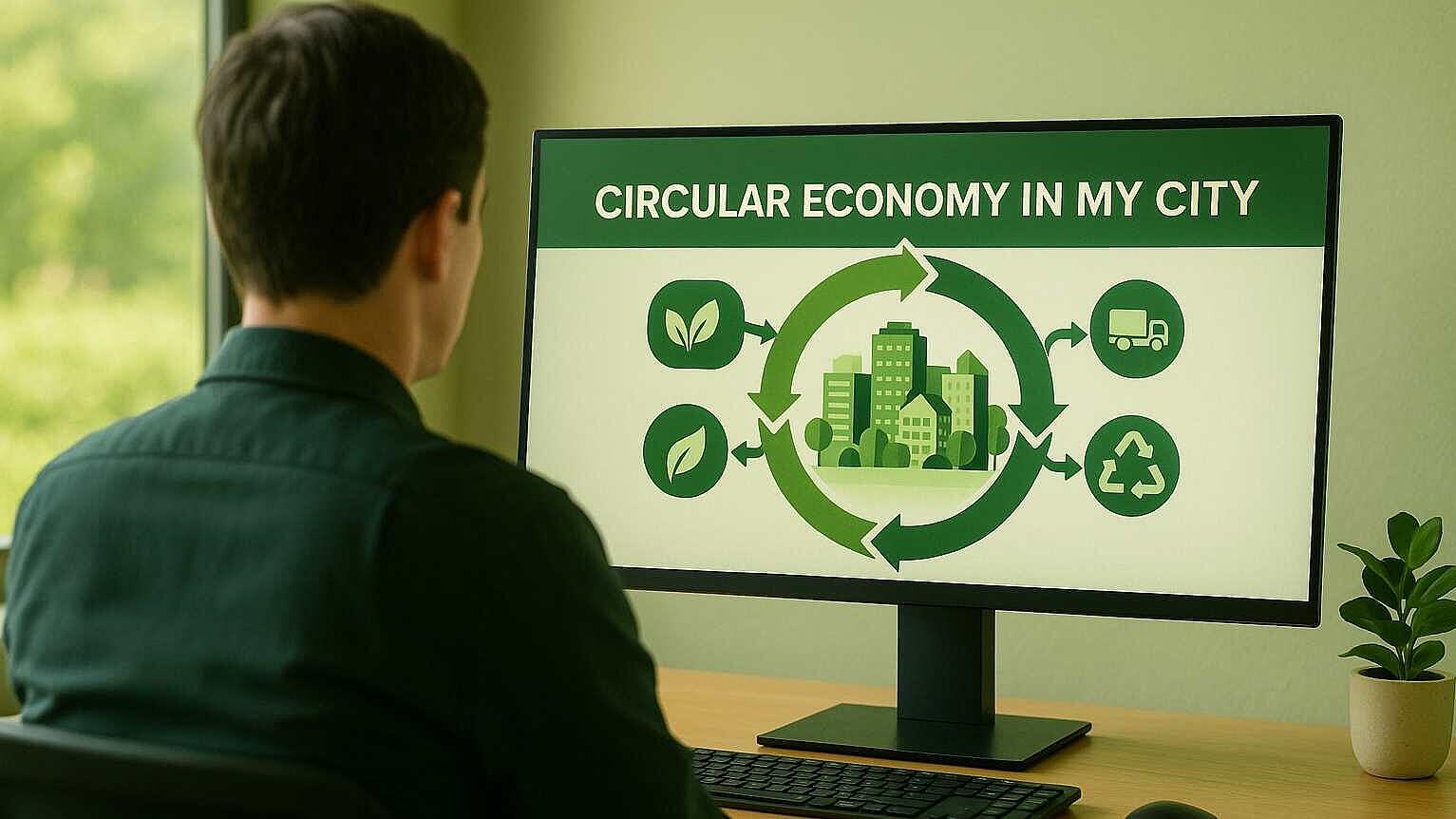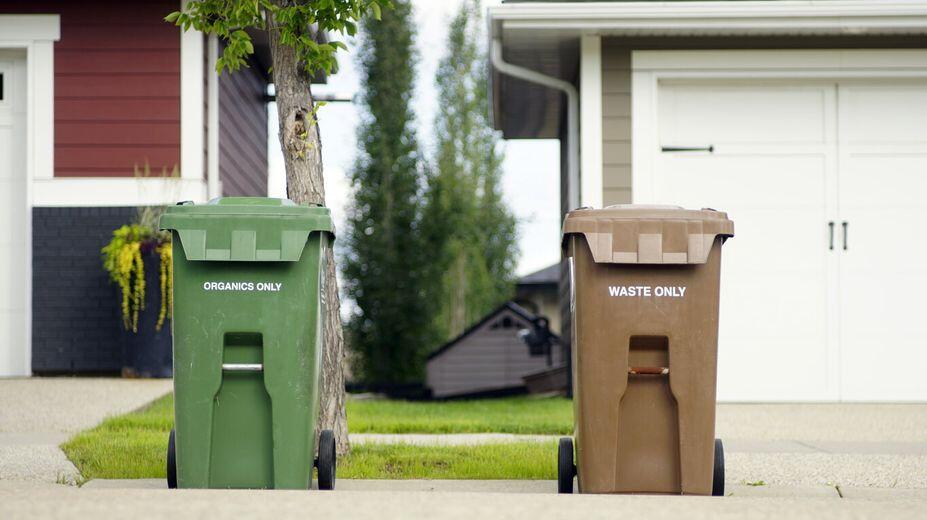 Circular Economy
Circular EconomyWhy do cities struggle to transition to a Circular Economy? — Information
Summary
The paper discusses the urgent need for a transition to a circular economy (CE) to achieve climate neutrality and Sustainable Development Goals, emphasizing the importance of cities in this transition as they generate 85% of global GDP and are responsible for 75% of resource consumption. Despite the potential, progress has been slow, with the OECD reporting only 10% of cities advanced in circular transition, while public procurement remains linear. Public entities, especially at a local and regional level, should lead by example given they account for a significant portion of procurement in Europe.
The paper outlines the 10 R-strategies for implementing CE, such as refuse, reduce, reuse, repair, and recycle, ranking them by their circular impact. However, accessing information and applying these strategies is challenging due to information overload and lack of common language in CE practices. Local efforts may be fragmented and documented in various languages, making it difficult for widespread adoption.
A mental exercise demonstrates how CE principles can be applied in re-equipping a public building by prioritizing the use of existing resources vs. new procurement. The paper underlines that despite the complexity, this practical approach is customary in Scandinavia, showing environmental and cost benefits.
The paper concludes with a suggestion for AI as a partial solution to information challenges in implementing CE strategies. It highlights the start of an innovation procurement by eight organizations in Europe to address these challenges, inviting other public organizations to participate and announcing public testing in autumn 2025. The article acknowledges the funding and insights from the CircularPSP project under the European Union's Horizon Europe Programme.
Open full article
Why do cities struggle to transition to a Circular Economy? — Information
The resources of Earth are limited. Humanity needs to become more circular in using the molecules with which we assemble all that we build. use and consume. Currently, only recycling is a well-known circular practice, but it is, in fact, a strategy of last resort.
Meanwhile, the linear systems of using fossils are in for a fighting to stay: more and more “drill-baby-drill”, thousands of lobbyists at COPs and cuts to environmental protection.
Who could lead a way? Whilst some companies are indeed changing including through the incredible work of the Ellen McArthur Foundation, one wonders what the cost-cutting deregulation will do to such efforts. At the same time, the public purse contributes little and should step up to lead by example. A large, distributed bottom-up pull could proof as successful as it did with solar power and heat production (e.g. PVs).
This article presents the first of four core challenges in cities — information access and overload— why cities struggling to deploy well known circular strategies. It includes a short mental exercise to apply circular thinking.
Status quo of circular economy in cities
Transitioning to a circular economy (CE) is essential to achieve climate neutrality and the Sustainable Development Goals (SDGs). However, transition to a CE is stalling. Globally, circularity declined from 9.1% in 2018 to 7.2% in 2023. Urban areas are particularly sensitive to material flows representing 85% of GDP and are responsible for 75% of the world’s resource consumption. This includes all that we buy as well as all the infrastructure surrounding us. Thus, a local economy utilising CE is more resilient to supply shocks as more material is locally sourced, repaired and utilised.
In Europe, around 60% of public procurement (of €2 trillion per year) occur across 250,000 public organisations, of which many on local or regional level. Although public procurement has been upheld as a powerful policy action to enhance resource efficiency in the economy by leveraging innovative and resource efficient solutions, the OECD reported that only 10% of cities have advanced on circular transition and urban policies. Most cities remain rooted in linear economic models.
In summary, there is immense potential, but much, much more could happen.
Strategies cities (and anyone) can deploy
CE is environmentally friendly because it optimises or retains the value of materials throughout their lifecycle. Such activity is often described through the 10 R-strategies hierarchically ranked by their circular impact which can be grouped by how they take effect as listed below. Whilst it is helpful, it is not complete as more strategies and other terms exist. For instance, car-“sharing” can be considered as part of “reuse” but the term captures a different mentality to, for instance, passing a read book you read to another person.
Produce less
- Refuse
- Rethink
- Reduce
Use longer
- Reuse
- Repair
- Refurbish
- Remanufacture
- Repurpose
Use again
- Recycle
- Recover
The graphic by Circularise ranks the 10R-strategies. The source also contains a description of each strategy.
10R-Strategies for a Circular Economy by Circularise
Difficult access to and overload of information
A community surrounding the CircularPSP project has identified and published in open access over 100 sources where good circular practice is documented. The sources cover more than a dozen languages. Each of them contains countless nuggets of innovative practice that could be adopted and implemented in any other city with little or no effort.
Why are there so many sources? The first reason is that the Circular Economy is a huge challenge. Almost our entire economy needs to be adapted (hence the many stakeholders who find change difficult or actively resist it). Instead of buying new, you can share, subscribe or repair. When the product is designed, it should use circular materials and be prepared for reuse or recycling. When it is recycled, new material flows need to be considered and put in place. It is a huge jigsaw puzzle with many moving parts, which fortunately can be solved in many steps. The second reason is that everyone who has done something good wants to share it, but does not know where exactly. Efforts are often local, so local initiatives emerge with contributions from staff who often do not speak a second language, making the other sources inaccessible.
Another challenge is making sense of existing information. As CE lacks a common language and existing use cases are not properly classified, they are difficult to identify as relevant.
Exercise: apply the R-strategies
Another information challenge arises locally:
Let’s imagine you are responsible for re-equipping a renovated public building with the optimal number of chairs. Briefly go the list of strategies above and imagine what you could do.
- If you have access to the interior designer, you can rethink the function of rooms and consider elements such as plant pots, wall fixtures, etc. as reserve seating in waiting areas or ‘spillover seating’ for those rare occasions when many people enter to reduce the total number of chairs.
- If you have access to information on how many chairs may be in stock — unused — across the city, you could request access to the stock, use these chairs first and reduce the number of chairs you need to procure.
- If you have access to information on whether moderately damaged chairs are being collected, you could place a large repair order.
- If there is a regional resale platform for office equipment, you can buy from them and extend the use of already embodied emissions and materials.
- If you have to procure and you know what a sustainable chair is, you can include circular criteria in the tender.
- If you wonder why the whole building is now furnished with different chairs, think about it: Doesn’t this happen in almost every building after a while? Also, consider whether you can refuse this as a requirement.
This exercise is definitely harder than clicking a button on your favourite marketplace. But time is not the only indicator. This exercise is common practice in Scandinavia. It has reduced costs while considering environmental impact as a value in itself.
The challenge of finding valuable information is much more complex for materials in construction, textiles or waste etc. It is further complicated by trying to understand what works in the context of the local economy, as not all materials, resources, services, etc. are available in each city due to different businesses. This will be the subject of the next articles on operation.
Enter the municipal worker
Let’s consider whether your experience resonates with a municipal worker persona who is keen but also warry.
“I have seen these strategies. The words are clear. Now how do I apply them? Where can I find examples? I only speak [other local language]. How would I interact with the owner of the case study in [other local language]? You are asking me to change what I have been doing for twenty years and you are not giving me the data I need. How can I be confident and go to my manager and say we should spend next year’s budget differently? If what I buy breaks or costs twice as much to buy, it is my fault. I am motivated, but you have to make it easier for me”.
The way forward
Readers may have already concluded that a specialised AI could be helpful. And indeed, this is an important part of the solution for eight organisations in eight European countries (Berlin, London, Helsinki, Istanbul, Guimarães, Sandyford and the networks of cities in Slovenia and regions in Sweden). But AI in itself is not enough as the exemplary exercise on guiding a worker with no experience through R-strategies demonstrates.
We have come together and jointly started an innovation procurement to solve the challenges of information, operation, organisation and change/upskilling.
Any public organisation interested in the project can follow us — please get in touch. We will launch public testing in autumn 2025.
Acknowledgement
The article builds on insights gathered through the CircularPSP project which has received funding from the European Union’s Horizon Europe Pre-Commercial Procurement Programme, under Grant Agreement n° 101092208.
Photo by Joshua Rawson-Harris on Unsplash



